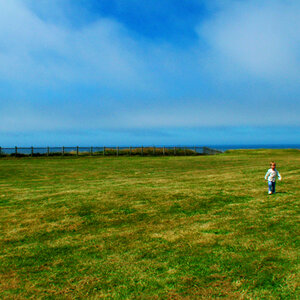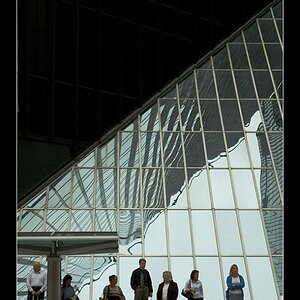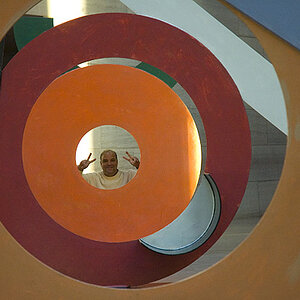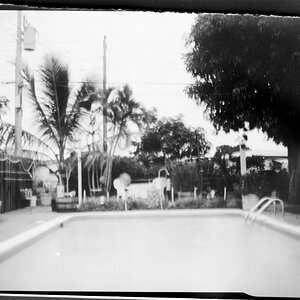TWX
No longer a newbie, moving up!
- Joined
- Apr 30, 2019
- Messages
- 410
- Reaction score
- 103
- Can others edit my Photos
- Photos NOT OK to edit
Christopher Frost's latest Canon RF 24-70mm f/2.8 lens review just appeared today, and while watching it, a comment of his struck me, in that Canon has apparently stated that their RF-mount lenses will come with new/better/extra features to distinguish them from their older EF-mount lenses. He proceeds to discuss the image stabilization that the RF lens has, compared to the predecessor EF Mk.II that doesn't have IS.
This got me thinking, Canon is certainly in the business of selling cameras, but Canon is also in the business of selling lenses. I've purchased a total of four Canon cameras if I include the Rebel EOS film camera I bought for its lens, and I have a total of nine Canon lenses, two of which were bought brand new, plus three third-party lenses, in a pair of Tamrons and a Tokina.
Take one of the Tamrons, the 70-300mm A005 SP 70-300mm F/4-5.6 Di VC USD. It's basically got all of Tamron's bells and whistles in it and essentially was created to compete directly against Canon's offerings, and as such its new retail price is $449, only $50 less than Canon's EF 70-300mm f/4-5.6 IS II USM at $499. Among the features both lenses have is some form of image stabilization, and I have a suspicion that this feature is a major part of the price, explaining why the Tamron costs almost as much as the Canon.
So basically if Canon were to implement in-body image stabilization, suddenly they would first, be competing with third-party lens manufacturers producing optically nice but unstabilized lenses with potentially much lower MSRPs than genuine Canon lenses would have, and second, their newer RF and EFM lenses would continue to compete with their older EF and EFS lenses lacking image stabilization or would otherwise not compel existing customers to upgrade to the new lens with more features.
As long as Canon continues to create new or revised lenses for RF and EFM that have more features to them than the EF and EFS lenses they share focal lengths and aperture sizes with, they'll have a chance of selling more of those lenses than if they basically improved their existing lenses by way of improving how the camera can stabilize them.
IBIS for Canon might help a lot of us out with existing lenses, but remember, they want us to buy more products, and while they're maintaining protocol interoperability it's not in their interests to give us any "free" features that remove incentive to us to buy more of their products. They don't appear to be taking active steps to stop me from using my existing lenses, but they're not going to make those lenses work any better than they did as-new either.
This got me thinking, Canon is certainly in the business of selling cameras, but Canon is also in the business of selling lenses. I've purchased a total of four Canon cameras if I include the Rebel EOS film camera I bought for its lens, and I have a total of nine Canon lenses, two of which were bought brand new, plus three third-party lenses, in a pair of Tamrons and a Tokina.
Take one of the Tamrons, the 70-300mm A005 SP 70-300mm F/4-5.6 Di VC USD. It's basically got all of Tamron's bells and whistles in it and essentially was created to compete directly against Canon's offerings, and as such its new retail price is $449, only $50 less than Canon's EF 70-300mm f/4-5.6 IS II USM at $499. Among the features both lenses have is some form of image stabilization, and I have a suspicion that this feature is a major part of the price, explaining why the Tamron costs almost as much as the Canon.
So basically if Canon were to implement in-body image stabilization, suddenly they would first, be competing with third-party lens manufacturers producing optically nice but unstabilized lenses with potentially much lower MSRPs than genuine Canon lenses would have, and second, their newer RF and EFM lenses would continue to compete with their older EF and EFS lenses lacking image stabilization or would otherwise not compel existing customers to upgrade to the new lens with more features.
As long as Canon continues to create new or revised lenses for RF and EFM that have more features to them than the EF and EFS lenses they share focal lengths and aperture sizes with, they'll have a chance of selling more of those lenses than if they basically improved their existing lenses by way of improving how the camera can stabilize them.
IBIS for Canon might help a lot of us out with existing lenses, but remember, they want us to buy more products, and while they're maintaining protocol interoperability it's not in their interests to give us any "free" features that remove incentive to us to buy more of their products. They don't appear to be taking active steps to stop me from using my existing lenses, but they're not going to make those lenses work any better than they did as-new either.





![[No title]](/data/xfmg/thumbnail/39/39498-362f11d9bfd0d9e222faa85b38801745.jpg?1619739056)







